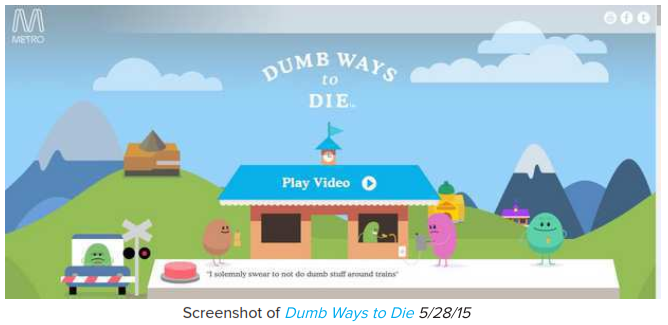
Photo credit: Digital Ralph
When done properly, content marketing has proven to be a highly productive and cost-effective strategy to propel sales growth or educate consumers. Content marketing creates reasons for prospects and consumers to connect with your organization’s website and it converts 30% more organic traffic into high-quality sales leads, according to Marketing Sherpa.
Experts recommend that content marketers:
- Deliver value to readers, rather than simply creating content for content’s sake or producing overtly promotional materials.
- Ensure that content can be read on a variety of devices including computers, tablets and smartphones.
- Create and distribute different forms of content across various channels in order to extend your reach and yield better results. Marketers can consider blogs, websites, social media, case studies videos, webinars and microsites.
- Use appropriate calls-to-action and promotional codes to create measurable results.
- Define your own strategy. There is no “one-size-fits-all” approach. What works for one company, may not work for others.
- Define your audience. Determine where they spend time online, their needs and desires, and what information they seek.
In addition to offering helpful advice and an overview of a history of content marketing, a Search Engine Journal white paper examines case studies of successful content marketing efforts that followed and extended those guidelines to create successful content marketing campaigns.
McDonald’s: What’s in the Food?
In its “Our Food. Your Questions.” campaign, McDonald’s Canada answered concerns that it was placing pink slime in its food. It dedicated a website page to answer customer questions. The page garnered more than a million visits. Visitors spent an average time of four and a half minutes on the site reading answers to 12 questions.
Its “Behind the scenes at a McDonald’s photo shoot” currently has 10.3 million views, 27,000 YouTube likes, 91,000 Facebook shares and 21,000 tweets.
Following the success in Canada, McDonald’s launched an “Our Food. Your Questions.” campaign in the United States, featuring myth buster celebrity Grant Imahara. Imahara went behind the scenes to investigate food production facilities. For example, Imahara visited a Tyson food-processing plant to see if Chicken McNuggets were made with pink slime. As of May 2015, the resulting video was viewed by more than 7.6 million people. It has 30,000 likes on YouTube, 16,000 shares on Facebook and over 3,000 Twitter shares.
ShipServ
ShipServ, which provides emarket services for the marine industry, opted for content marketing to revive lagging interest in its site in 2008. ShipServ created a multifaceted content marketing campaign:
• Located maritime blogs and sought to become an industry thought leader.
• Changed is website from an impersonal enterprise site to a site with lighter, customer-friendly design and specific call-to-actions.
• Created a blog for to encourage feedback from customers.
• Promoted content through social media, including videos, LinkedIn group discussions, blog posts and podcasts.
• Created a LinkedIn group called “ShipServ Maritime Trading Network” for suppliers and purchasing people in the shipping industry. It created content based on survey results and what users searched for. From 2010 to 2015, the group grew from 800 to 4,000 members.
As of the first quarter 2014, the campaign had:
- increased the number of website visitors by 59%,
- increased in page views by 70%,
- Increased in average time on site by 25%,
- Prompted over 1,000 downloads of a white paper.
Metro Trains
To promote rail safety, Australian company Metro Trains produced an animated video that was described as “adorably morbid.” Developed by advertising agency McCann Melbourne as a public service announcement, the “Dumb Ways to Die” video featured 21 cartoon characters dying through stupid mistakes. Three of the characters die after being hit by trains.
The video was viewed 2.5 million times within 48 hours and has since surpassed 100 million views. More importantly, the campaign contributed to a more than 30% reduction in “near-miss” accidents between November 2012 and January 2013.
The safety campaign website continues by sharing train safety facts that can be downloaded as posters, animated GIFs of the characters, and game for Android and iOS devices.
Bottom Line: These three case studies demonstrate how organizations can use content marketing to accomplish their goals, such as defending their brand’s reputation, increasing website visits, and improving public safety. Statistics indicate content marketing can be a successful strategy, but such case studies clearly demonstrate its benefits. These case studies of effective content marketing campaigns can help marketers understand content marketing’s potential and consider how it can improve their own strategies.
William J. Comcowich founded and served as CEO of CyberAlert LLC, the predecessor of Glean.info. He is currently serving as Interim CEO and member of the Board of Directors. Glean.info provides customized media monitoring, media measurement and analytics solutions across all types of traditional and social media.





